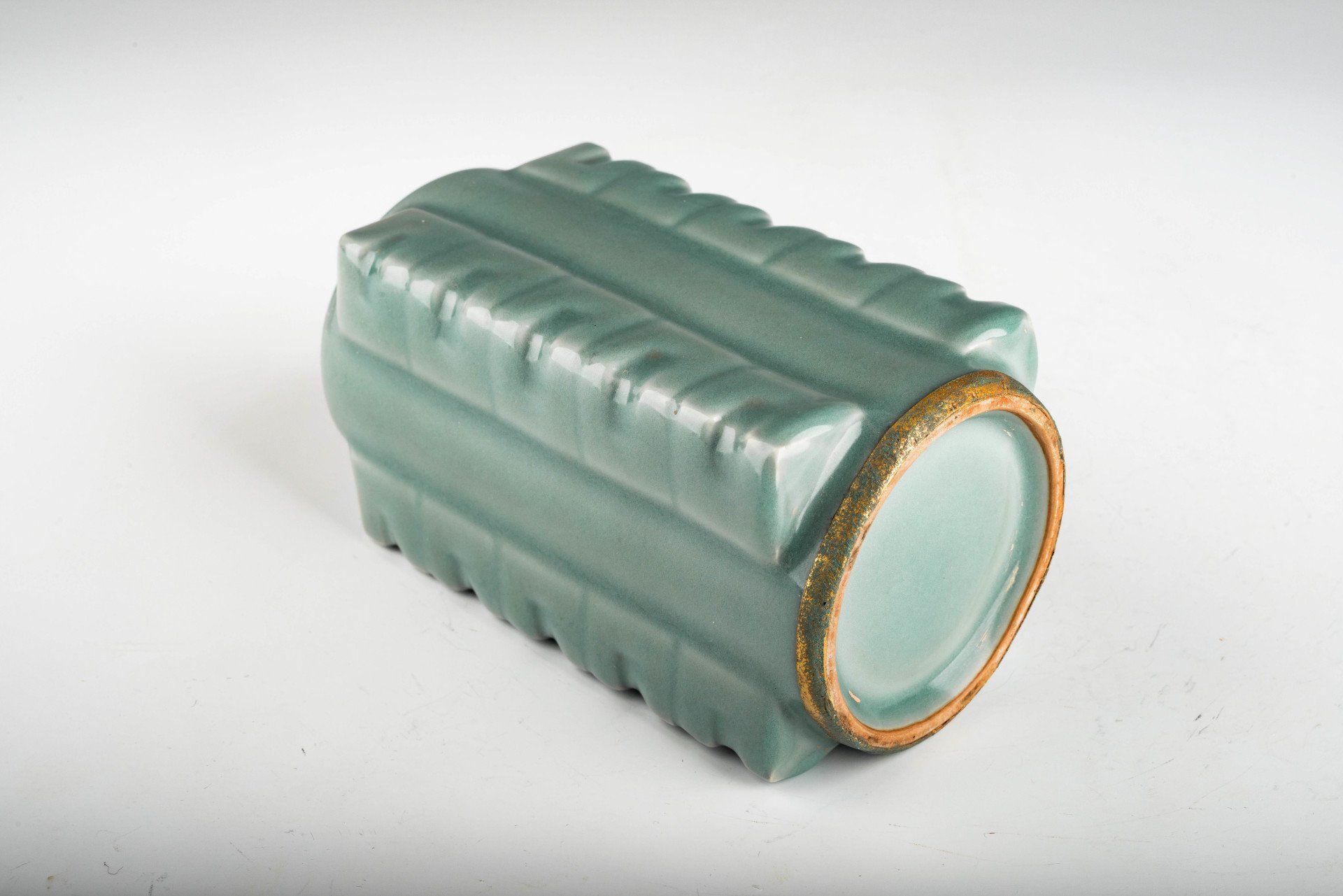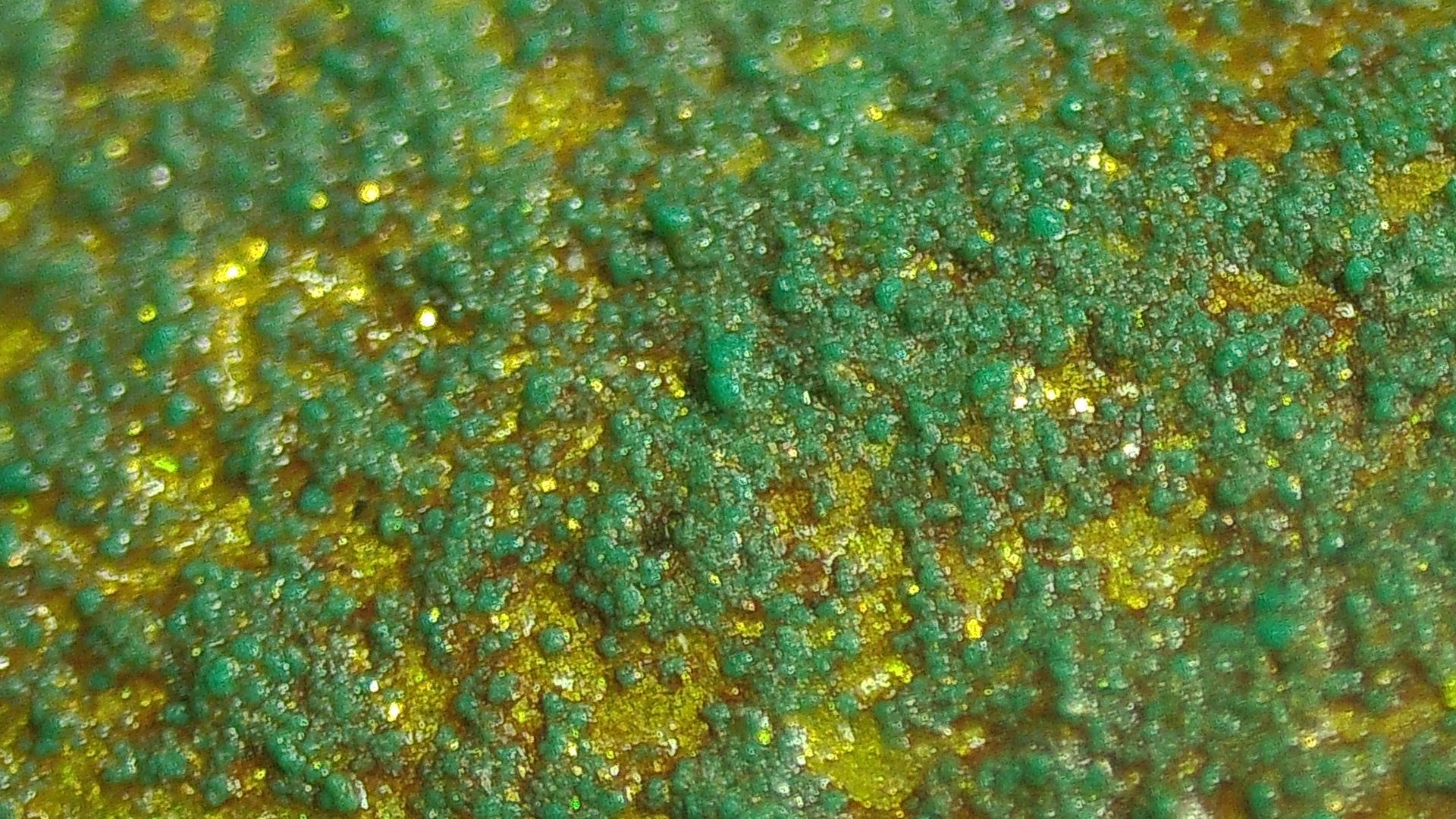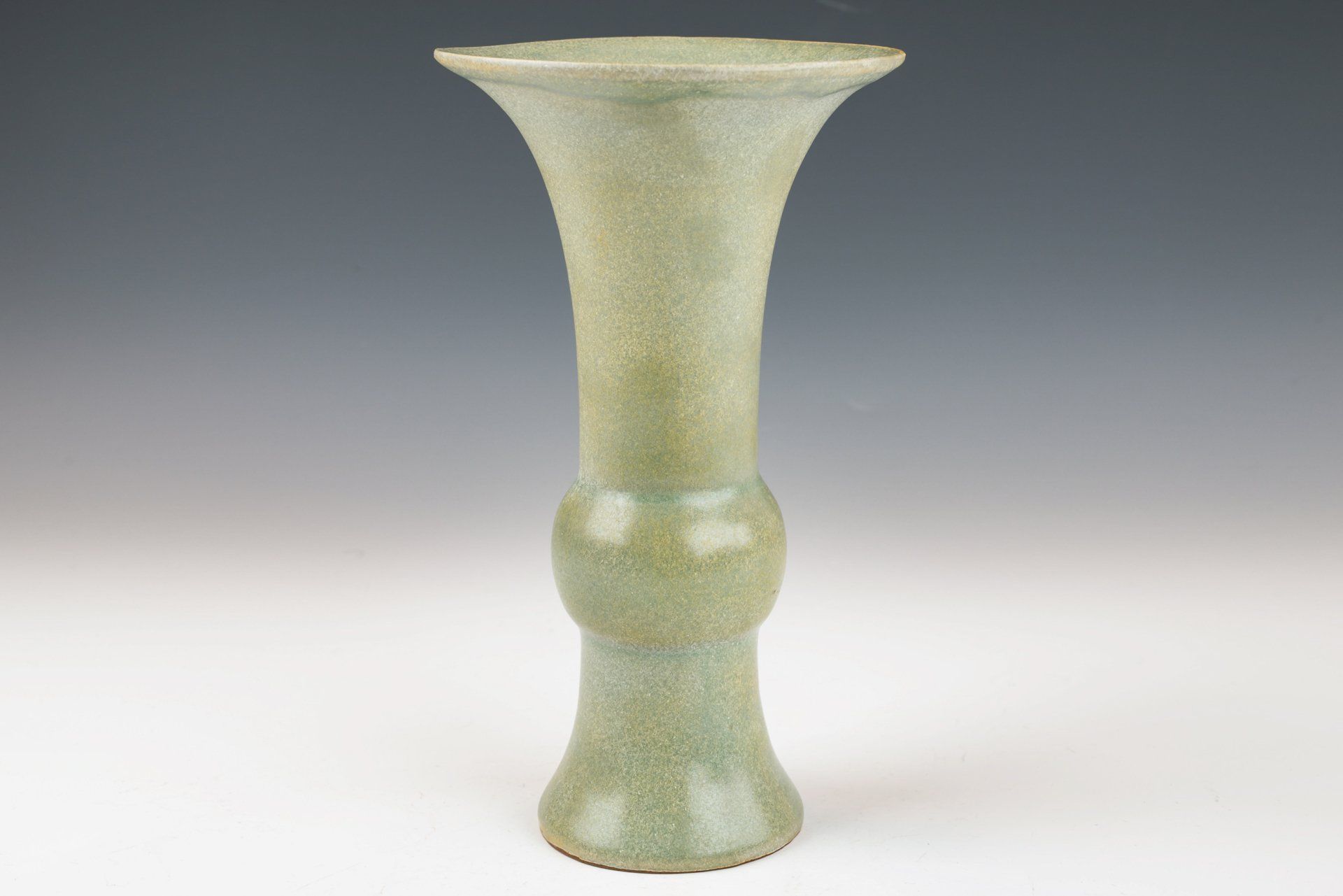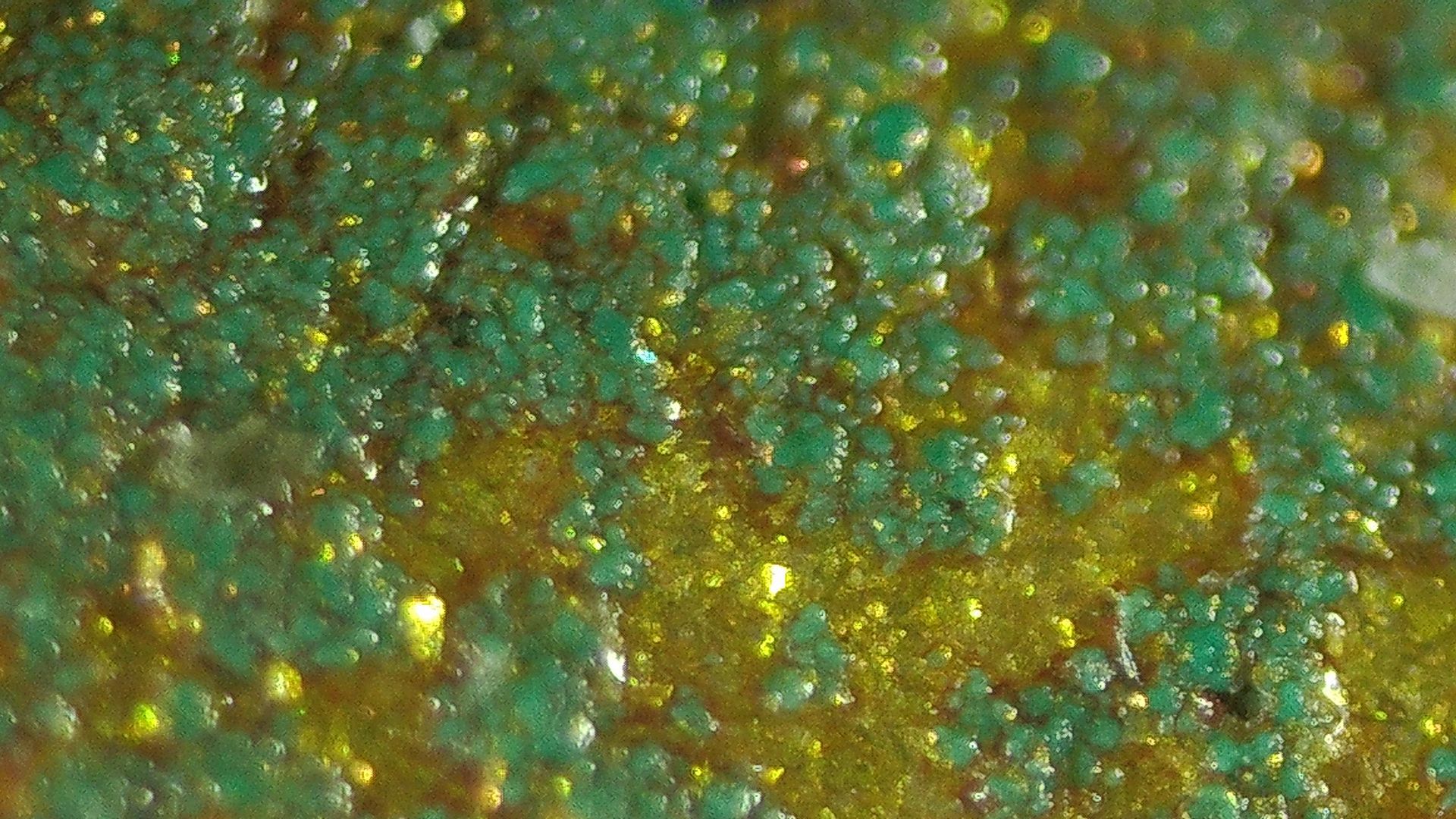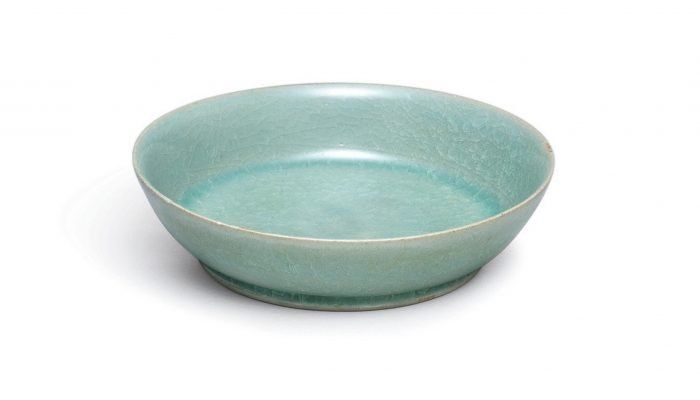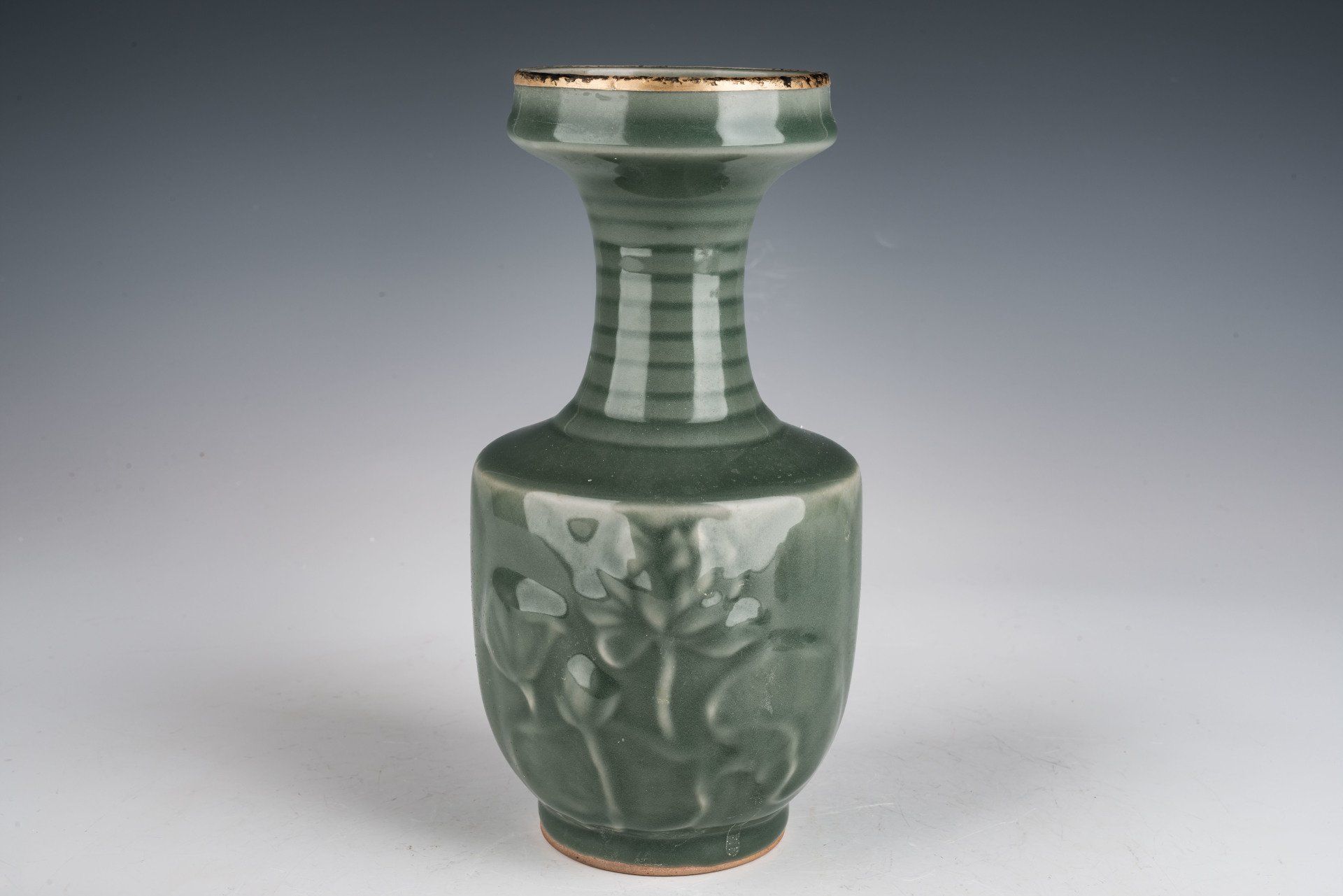Chinese Masterpieces
Introduction for Chinese Art Collectors
This website has been established to address the rampant misinformation, unethical practices, and manipulative dynamics currently plaguing fine art collectors of Chinese Art in America and globally. The finest examples of Chinese art often remain obscured from the open market, as access is largely restricted by an elite group of individuals who benefit from withholding exceptional works for their own gain. Prominent auction houses, such as Sotheby’s, Christie’s, and Bonham’s, exert significant control over the global fine art market and its narrative. Institutions such as museums, universities, and affiliated art dealers often become complicit, aligning with these auction houses’ interests to avoid professional repercussions that might arise from dissent.
The Communist Party's takeover of China in 1949 effectively severed the connection between collectors and their audiences. Although the country’s cultural revolution in the 1960s decimated many artistic legacies, the gradual opening of China since the 1990s has allowed for the reintroduction of hidden collections into the market. The elite auction houses faced a dilemma: either acknowledge the superior quality of newly available pieces and consequently expand the market, or cling to their control through deception and misinformation. They opted for the latter, engaging in collusion with state authorities to manipulate both the market and historical narrative. As such, collectors must develop an analytical eye to distinguish the finest pieces and make informed investment decisions. This knowledge is essential, especially in light of the elitism displayed toward those who acquire art outside the confines of corrupt networks dominated by the aforementioned dealers and auction houses.
There exists an ingrained loyalty among these elites, which compromises their impartiality and allows them to promote inferior works at inflated valuations, all while preserving the façade of credibility within their professional circles. Consequently, price assessments often reflect previous market values rather than current realities, as many quality pieces are sidelined in decorative auctions or unfairly dismissed to protect reputations. The jade market exemplifies this trend, causing trepidation among collectors regarding their purchases. Experts frequently label objects as rare, despite the vast production achieved by Chinese artisans over millennia. For instance, during the Ming Dynasty's Xuande period, the royal kilns generated over one million pieces in a single year, many of which were not masterpieces. An enlightening examination of auction catalogs from three decades past in comparison with those of today reveals a troubling decline in quality; contemporary pieces surpass earlier sales, given China’s increased engagement with the global market.
Moreover, the insistence on provenance as the key to authenticity has distorted the market. Collectors are misled into believing that attachment to historic lineage signifies quality, which is unfounded. Assertions that the Chinese have endlessly replicated all historical works are not only unfounded but utterly implausible. These deceptions effectively reinforce control over the market by perpetuating myths about fakes and reproductions. Notably, high-quality period pieces stand in stark contrast to poorly executed fakes. The true hallmark of excellence is the meticulousness evident in masterpieces from distinguished artisans, characterized by superior materials and intricate details. Collectors must be educated about the historical context of techniques and materials, particularly the unique cobalt used in earlier dynasties, which starkly differs from contemporary varieties
The misrepresentation propagated by auction houses and dealers has resulted in the widespread victimization of unsuspecting collectors. Many appraisals rely on subjective opinions rather than factual accuracy, further confusing and alienating buyers. The often misguided reliance on auction records exacerbates this issue, as the best pieces frequently change hands privately, leaving buyers ill-equipped to gauge the true market landscape. The malignancy of corruption permeates every tier of the market, with many collectors unwittingly perpetuating cycles of misinformation and manipulation. Collectors ought to arm themselves with knowledge rather than relying on distorted narratives promulgated by self-serving elites.
A thoughtful, well-rounded approach to collecting entails scrutinizing as many resources as possible, analyzing each piece meticulously, and trusting one’s judgment based on the pieces' intrinsic qualities rather than external validation. While it is true that the socio-political landscape of China has significantly impacted its art market, collectors must educate themselves on the intricacies of this field. Museums, often housing mediocre representations of art intended for broader audiences, can mislead collectors into believing that such entries are of high quality. Genuine masterpieces, however, remain the privilege of the affluent and aristocratic circles. The auction houses hold a responsibility to represent the best available works equitably to all collectors, emphasizing transparency rather than the covert racketeering prevalent in contemporary practices.
It is of utmost importance that collectors scrutinize their sources of information and remain vigilant against the deceptive practices of contemporary dealers and auction houses. As you engage in your journey as an art collector, remain committed to developing your expertise in your area of interest. Observe, analyze, and handle numerous pieces with a discerning eye toward detail, condition, and craftsmanship. I encourage you to revisit this site, where I will showcase exceptional jade and porcelain masterpieces to assist you in building a robust and informed collection. Happy collecting!
Navigate Chinese Masterpieces Site Just Select Pages Below
The Inaugural Ceramics Commissioned by the Emperor in Chinese History: Guaranteed 100% Authenticity from the Northern Song Dynasty's Official Imperial Royal Ru Kiln Porcelain Collection – An Unmatched Provenance of Authenticity.
For All Enquiries Please Contact AGENT : Venizelos G. Gavrilakis, President,VENIS STUDIOS
Email Venizelos@ChineseMasterPieces.com
tel:+971 50 683 5877
I began my collection in the 1970s, and in the 1990s, I focused on acquiring an exceptional array of artworks from private Chinese sources. These sources faced severe persecution for possessing collections that were ancestral heirlooms, predating the Communist era. Among my holdings is the Official Commissioned Imperial Royal Ru Kiln Collection, originating from the collection of Emperor Huizong of the Northern Song Dynasty.
This collection features unique pieces that stand unparalleled in significance, as many of these forms have been previously unseen. The condition of these works is pristine; they are certified 100% authentic, with verifiable characteristics including cuprite and malachite corrosion on the fire-gilded copper bands, which took approximately 900 years to develop. This corrosion is readily observable with the naked eye, as is the crushed agate within the glaze, which can be examined with a 20x loupe. Despite the proliferation of Ru ware across the internet, numerous auction houses continue to erroneously classify these original pieces as fakes, perpetuating misinformation. It is essential to note that only Commissioned Official Royal Imperial Ru wares are genuinely rare. These pieces are not widely available online, and no Royal Imperial Ru wares have ever been offered at auctions. Any skepticism about the authenticity of these wares can be dispelled by recognizing that it would be impossible for any contemporary kiln in China to replicate such masterpieces. Throughout history, the only kiln capable of producing works of this caliber was the Royal Ru Kiln during the Northern Song Dynasty under Emperor Huizong. The second commissioned wares, characterized by unglazed foot rings that were fired flat in the kiln, include the featured Cong vase, which showcases fire-gilded copper bands exhibiting the aforementioned corrosion. The authenticity of these pieces is evident in their cuprite and malachite corrosion, which is readily visible, as well as the crushed agate in the glaze, identifiable with a 20x loupe. Expertise is not a prerequisite for recognizing these facts. It is important to highlight that all second-commissioned wares lack markings and possess an off-white biscuit that turns brownish upon firing. These wares are distinguished by their luxurious, smooth glaze, free from crackle, and display unique features such as fire-gilded copper bands. In my estimation, these second-commissioned wares represent the finest celadon wares and the most significant wares in China’s historical legacy. Emperor Huizong of the Northern Song Dynasty reigned from 1082 to 1135.
Examine and Review the Information Provided Below Thoroughly
The following series of close-up photographs presents the Cuprite and Malachite corrosion observed on the RU WARE copper fire-gilded bands. It is important to note that fire gilding, a process involving the application of gold and mercury, has not been employed since the mid-19th century due to its associated health risks. The characteristic patina visible on these bands has developed over approximately 900 years, rendering it virtually impossible to replicate artificially (referenced from David Scott's "Copper and Bronze in Art," Chapter 3, page 106). The natural progression from metal to cuprite and subsequently to malachite is complex and challenging to reproduce in a laboratory setting. Indeed, most methodologies for generating artificial green patinas on copper alloys, such as those catalogued by Hughes and Rowe (1982), do not yield malachite formation over a cuprite substrate. As such, the identification of this specific type of corrosion, corroborated by analytical and metallographic investigations, serves as a strong indicator of an artifact's authenticity. Additionally, microscopic images reveal the presence of minute reflective particles of crushed agate incorporated into the RU WARE glaze. Such reflections can also be discerned with a 20x loupe, with further evidence available in the microscopic photographs adjacent to each artifact image. Notably, only the Imperial Ru Wares that were officially commissioned feature crushed agate in their glaze. Pieces sold by auction houses typically do not exhibit this characteristic, as agate was not utilized in merchant wares. The finest merchant wares, equipped with fire-gilded copper bands, were presented as tributes to the Emperor. Meanwhile, flawed merchant wares were sold at reduced prices to the general populace, and those with severe defects were often destroyed. During the reign of Emperor Huizong, significant efforts were made to establish the Ru Kiln as a premier production facility for his personal commissions and those of his court, effectively designating it as the Official Royal Kiln. He specifically mandated the inclusion of rare blue agate in the glazes of all commissioned wares. These official pieces are generally larger and exhibit distinctive styles, forms, and glazes, many of which remain unparalleled in contemporary collections. Archaeological findings have confirmed the location of the Ru Kiln associated with merchant wares predating Emperor Huizong's commissions; however, the site of the Official Royal Ru Kiln has yet to be located.
Following the incursion of the Jin Army into the Northern Song Dynasty, it is believed that many Imperial Royal Kiln artisans migrated southward, with approximately half joining the Imperial Guan Kilns and the other half working at the Longquan Kiln. This migration contributes to the stylistic similarities observed between the renowned second-commissioned Royal Ru Kiln wares and those produced at Longquan. Notably, however, Longquan wares lack the crushed agate incorporation that characterizes the official Ru Wares.
ppjrs
CLICK ON PHOTOS TO ENLARGE
Below are 48 examples of Official Imperial Royal Ru Wares and Tribute Ru Ware Vases
Contact me for Price ppjrs
Understanding "Botryoidal Malachite" Patina
Formation of Fanlike Crystal Needles
Most crystals simply begin to grow using available molecules. This results in discrete crystals whose sizes depend on available material. But malachite is different. It seldom forms discrete crystals of good size. Instead, scientists say, developing malachite crystals “split”, diverging into tiny needles, packed together in a fanlike arrangement.
The fanlike malachite needles grow into tightly bonded spherules, which crowd together and bond, forming a solid mass. When the spherules stop growing and terminate, the top surface is rounded to some degree. The terms “botryoidal” (resembling a cluster of grapes) and “reniform” (kidney-shaped) are used to describe large to small undulating masses of spherules.
Author Bob Jones Holds the Carnegie Mineralogical Award, is a member of the Rockhound Hall of Fame, and has been writing for Rock & Gem since its inception. He lectures about minerals, and has written several books and video scripts.

WATCH
Click On Video Clip Proves Botryoidal Malachite Can't Be Faked! No one has ever faked this Botryoidal malachite patina only happens in nature. This Guaranties Authenticity Of This Imperial Royal Ru Ware Collection
Priceless Past WWW.pricelesspast.com
Link to Full Video https://youtu.be/5O-l6vY0dnc?si=FsHEJdKox0a1p0bH
An Analysis of Royal Imperial Ru Ware Commissioned and Collected by Emperor Huizong of the Song Dynasty During the Northern Song Period. ppjrs
Ancient Treasures: Ru Kiln Secrets Revealed!
Emperor Huizong reigned from 1100 to 1126, during which time he abdicated in favor of his son. He is renowned for his advocacy of Taoism and is celebrated for his exceptional talents in poetry, painting, calligraphy, and music. However, his Northern Song Empire ultimately succumbed to the advancing Jin armies, leading to his capture in 1127. Huizong died in captivity in 1135, having transitioned from the status of the world's wealthiest individual to that of a diminished man. After his death, his extensive collections were meticulously consolidated and preserved in large wooden crates, enduring through time.
Since China's opening in the 1990s, various historical collections have entered the marketplace. Notably, my collection of Imperial Ru ware originates from Emperor Huizong's personal assemblage. During his tenure, he commissioned the Ru Kiln to produce wares specifically for himself and his court, recognizing it as the foremost source of Imperial tribute wares. The tribute wares produced by the Ru Kiln during this era were distinguished by their remarkable quality, often devoid of defects. To further enhance their uniqueness, these wares incorporated a variety of colors and featured fire-gilded bands on the rims, occasionally on the bases. The gilding technique utilized gold and mercury, a method that has not been employed since the mid-1800s due to safety concerns. The intricacies of the fire gilded bands display complex corrosion patterns of cuprite and malachite, natural phenomena that are exceedingly difficult to replicate in laboratory settings. Established research underscores the challenges associated with the transformation from metal to cuprite to malachite, with most synthetic formulas failing to replicate malachite atop cuprite layers, thereby providing validation for the authenticity of such artifacts.
This innovation inspired other kilns to adopt similar techniques, incorporating fire-gilded bands in their tribute wares. Before the Ru Kiln attained its designation as the official Imperial kiln, its production primarily consisted of small wares that exhibited sporadic crackling and spur marks due to the firing process on stilts. Many of these pieces contained imperfections, resulting in the destruction of severely flawed items and the sale of lesser-quality wares to the public at reduced prices. Such flawed wares frequently appear in auctions conducted by Sotheby's and Christie's and are often showcased in museums housing Ru ware collections. Higher-quality pieces were sold at premium prices to affluent merchants. The finest wares were presented as tribute to Emperor Huizong, who received extravagant offerings from various kilns. Recognizing the demand for superior quality wares, Emperor Huizong designated the Ru Kiln as the first official Royal Imperial kiln in China.
His objective was to create wares that were distinctive and specifically intended for himself and his court. He sought pieces that echoed the historical celadon wares, aiming for a jade-like aesthetic reminiscent of Korean Koryo ceramics. After reviewing prototype pieces, he insisted on eliminating spur marks by firing the wares flat in the kiln with unglazed foot rings. Furthermore, he mandated the incorporation of rare blue crushed agate into the glaze, a feature unique to the official Royal Imperial wares commissioned by him. The initially commissioned wares displayed a grayish biscuit that transitioned to brown post-firing, with some pieces bearing inscriptions. These wares featured distinctive crack ice crackles. Emphasizing size and simplicity, these pieces were larger than previous tribute wares and showcased refined forms, such as trumpet-shaped mouths. Despite occasional flaws during the firing process, these Royal Imperial wares were exclusively designated for the Emperor and his court. As the official Imperial kiln, the Ru Kiln's focus was solely on producing wares for the Emperor and his court. Huizong appreciated the intrinsic beauty of these often flawed and simplistic pieces, recognizing their individuality akin to human character.
However, some of his advisors sought more visually appealing wares. Consequently, he tasked the Ru Kiln with creating the most exquisite celadon wares ever produced in China, emphasizing elegance and luxury in design. The second series of official Royal Imperial wares manifested in various celadon hues, adorned with rich glazes that seamlessly integrated rare blue crushed agate. Unlike the initial batch, these wares were meticulously crafted and largely free from prior defects, with exquisite forms and flat-fired unglazed foot rings. Selected special wares featured gilded copper or silver bands, enhancing their opulent appearance. Importantly, all second commissioned official Royal Imperial wares lacked specific markings. It must be emphasized that wares produced before the Ru Kiln’s designation as the official Imperial kiln do not contain agate in their glazes. Certain auction houses and museums mistakenly claim the presence of crushed agate in these earlier wares, fabricating narratives that assert its dissipation during the firing process. This assertion is fundamentally flawed, as agate requires excessively high temperatures for melting—far exceeding the maximum temperatures reached by Song dynasty kilns. Additionally, the practical difficulties associated with crushing agate into a fine powder contribute to the clear visibility of agate traces in authentic Royal Imperial Ru wares.
I have compiled a significant collection of Ru and Ju wares, artifacts that have remained largely concealed since the decline of the Northern Song Dynasty. The Qianlong Emperor's collection predominantly comprised flawed merchant wares developed before the Ru Kiln's establishment as the official Royal Imperial kiln. It is only since the 20th century and the reopening of China that many fine pieces, once obscured from view, have entered the marketplace. This narrative seeks to illuminate the complexities surrounding Ru and Ju Kiln wares in the context of Emperor Huizong's reign. For many years, scholars and collectors have relied on pieces from the Qianlong Emperor's collection; while aesthetically appealing, they do not accurately represent the authentic Royal Imperial Ru and Ju wares commissioned by Huizong for himself and his court.
In the aftermath of the Jin Army's incursion into the Northern Song Dynasty, workers from the Imperial Royal Kiln sought refuge in the southern region, with many likely contributing their skills to the Imperial Guan Kilns, while others joined the Longquan Kiln. Notably, this lineage accounts for the visual similarities observed between certain Longquan pieces and the second commissioned Royal Ru Kiln wares, although the Longquan products lack the characteristic crushed agate present in the latter's glazes.
Please examine all the information, photos, microscopic photos, that prove my conclusion.
The Ru-Wares Represent the First Commissioned Official Imperial Ceramics within China's Historical Context.
The first commissioned Royal Imperial Ru ware is thoroughly documented in historical texts, which indicate that Emperor Huizong instructed the Ru/ Ju Kiln to produce celadon wares characterized by modesty, understated elegance, and a deliberate simplicity that evokes a sense of antiquity. Notably, these initially commissioned Royal Imperial wares incorporated Rare Blue Crushed Agate into the glaze formulation. This can be discerned through the use of a 20x loupe, and microscopic photographs reveal the distinctive specks of agate found in each piece. The use of crushed agate is exclusive to the Official Royal Imperial Ru wares developed under Emperor Huizong's patronage. These early commissioned wares exhibit a variety of unique forms previously unseen, showcasing the remarkable skill and artistry of the Ru kiln artisans. The foot rings of all first official Ru wares remain unglazed. Additionally, each piece features a fine, cracked ice crackle in the glaze, with interior glazing also present. Many of these wares have marks inscribed on the bases, often inscribed, and the vases typically feature trumpet-shaped mouths, distinguished by their larger dimensions compared to merchant and tribute wares. The first commissioned Official Royal Imperial Ru wares are crafted from an ash-colored biscuit that transforms to brown upon firing. Furthermore, each piece exhibits the signature fine cracked ice crackle in the glaze, maintaining consistent interior glazing. Exclusively produced for the Emperor and his court, these wares reflect Emperor Huizong's appreciation for beauty in simplicity. He regarded each piece as an artwork, embracing any imperfections, which ultimately remained within the court as evidence of his vision's fulfillment. An illustrative close-up of a first commissioned Official Royal Imperial Ru vase depicts a droplet of glaze adhering to the foot ring, highlighting chips of Rare Blue Agate within the glaze. The accompanying ancient writings affirm the historical significance of these pieces as the legendary Official Royal Imperial wares commissioned by Emperor Huizong of the Song Dynasty. ppjrs
(click image to enlarge)
Ru Kiln Imperial Tribute Wares: Exceptional Artifacts Presented to Emperor Huizong of the Northern Song Dynasty, Featuring Right
Three Exemplary Tribute Vases.
Tribute ware is typically small, characterized by its fire-gilded copper bands, which exhibit corrosion patterns of cuprite and malachite. These distinctive features serve as reliable indicators of their age, often considered more authentic than thermoluminescence (TL) tests, earning the trust of experts in the field for authenticity verification. The production of tribute wares involves a glazing process that encompasses the entire surface. Notably, the pieces are fired on setters equipped with prongs to elevate the items above the kiln floor, resulting in spur marks on the base that are approximately the size and shape of sesame seeds. The glaze on tribute wares is smooth and showcases no inclusion of crushed agate in the glaze. It is important to note that the presence of crushed blue agate in the glaze is exclusive to Commissioned Official Royal Imperial wares. Typically, tribute wares feature either an off-white or ash-colored biscuit, representing the finest quality merchant wares that were adorned with fire-gilded copper bands and presented as tribute to Emperor Huizong. ppjrs
(click image to enlarge)
Sotheby's sold these two Flawed Northern Song Dynasty Ru Ware brush washers in Hong Kong. Now Christie's has sold a flawed Ru Ware Tea Bowl in Hong Kong. They should return the money
Second Commissioned Official Royal Imperial Ru-Wares Represent the Pinnacle of Celadon Production in China.
The Ru Kiln was commissioned to produce the exquisite second series of official Royal Imperial Celadon wares for Emperor Huizong and his court. These wares are characterized by their elegance, luxury, and aesthetic beauty, surpassing both merchant and tribute wares in refinement and size, while consistently showcasing a distinctive celadon hue. Notably, all pieces from this second series are infused with rare crushed blue agate within their glaze, an element observable through a 20x loupe, as evident in the microscopic photographs accompanying each piece. The use of crushed blue agate is exclusive to the Official Imperial Ru wares developed during Emperor Huizong’s reign. Furthermore, these second commissioned Royal Imperial wares exhibit a variety of unique forms that underscore the exceptional craftsmanship of the Ru kiln. The foot rings of these wares are unglazed and were intentionally fired flat within the kiln. Two vases feature fire gilding over copper bands exhibiting corrosion from cuprite and malachite, which serves as a reliable indicator of the artifact's age, more credible than thermoluminescence (TL) tests and widely acknowledged by experts to verify authenticity—an attribute that is impossible to replicate. It is important to note that all second-commissioned Royal Imperial wares are unmarked. They possess an off-white biscuit that transitions to a brownish tone post-firing. The wares exhibit a rich, smooth glaze with no crackling, while some pieces feature fire gilding over copper bands, and those without bands likewise maintain a flawless glaze. The vase displayed, adorned with a gilded silver band, shows minimal cracking, restricted to a few fine lines. The gilded silver band, exhibiting a darker celadon glaze enhanced with rare blue crushed agate, is visible under magnification. The fire gilding on silver bands has pores in the gild, allowing tarnish to seep through the pores, resulting in pronounced black corrosion on the bands. ppjrs
(click image to enlarge)
Ru-Kiln merchant wares are distinguished by their fine quality; however, they are primarily positioned in the market for affluent merchants, while items with imperfections are made available to the broader public at substantially lower prices.
The three Ru Kiln pieces displayed are examples of Merchant wares. Previously, the only known specimens of such wares were those collected by the Qianlong Emperor during the Qing Dynasty. However, following China's integration into the global market, numerous exquisite pieces and collections that had been concealed have now become accessible. Merchant wares are typically smaller than Commissioned Royal Imperial wares and exhibit complete glazing, including the foot ring. These items were fired using setters equipped with prongs, which elevated the pieces above the kiln floor. Consequently, they display spur marks that are approximately the size and shape of sesame seeds—distinctive traits that are exclusive to merchant and tribute wares. It is important to note that merchant wares lack the refinement of tribute wares, as the most exquisite examples were adorned with fire-gilded copper bands and presented to Emperor Huizong as tribute. ppjrs
(click image to enlarge)
Navigate Chinese Masterpieces Site Just Select Pages Below















